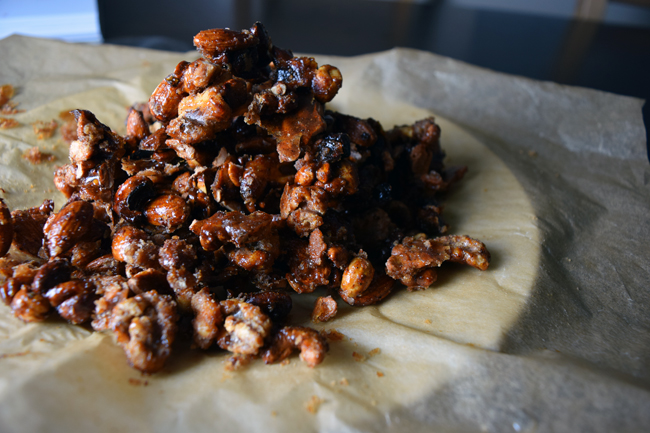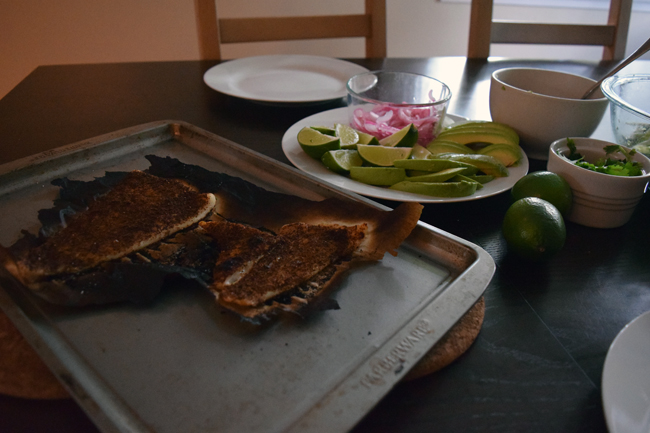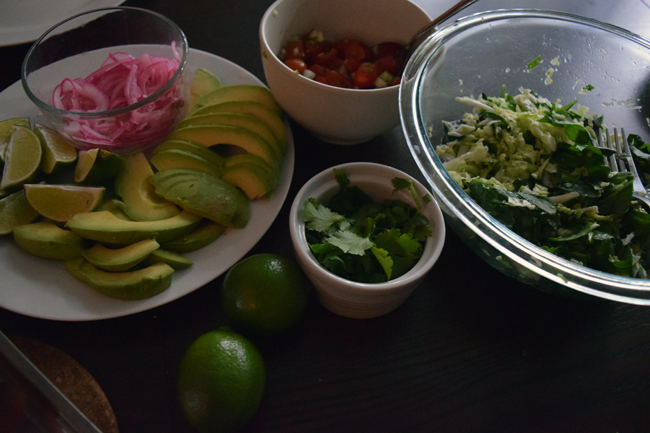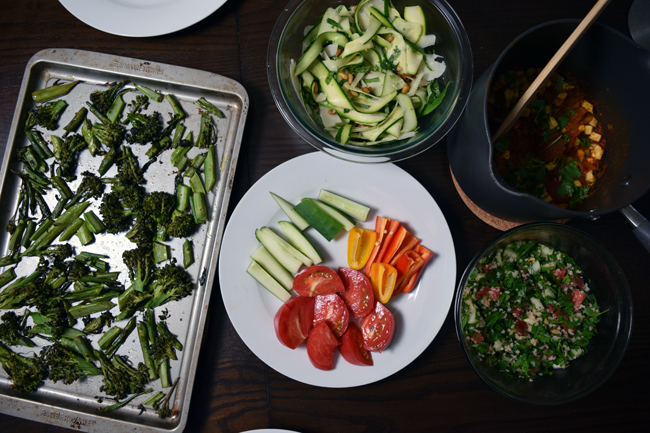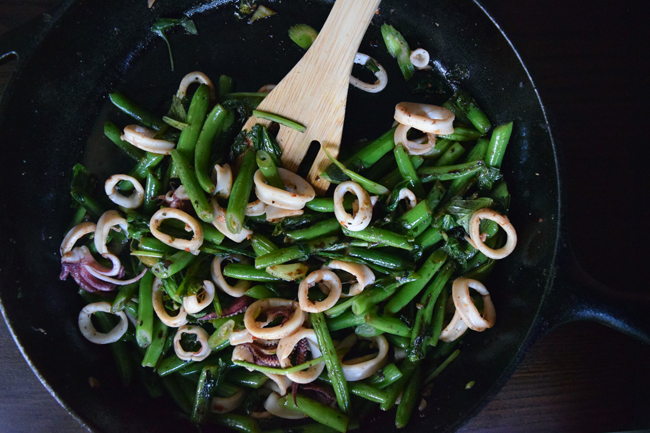As evidenced previously, I’m a total sucker for putting Asian spices in traditionally Western foods. Like, I actually find myself incapable of making “plain” banana / zucchini bread like a normal human and insist on garam-masala-ing or allspicing everything. I know, it’s probably insufferable, but I literally can’t stop.
My predilection made Seven Spoons, by Tara O’Brady an easy win for me because of one single recipe: Spiced Candied nuts. I know, the book’s got the gorgeous fig toast, and everyone’s talking about the chicken or the chocolate chip cookies, but these nuts, guys. Okay, it took me a super long time to figure out an even remotely appetizing way to photograph a pile of nuts, but they are really good. They’re everything candied walnuts wished they could be: sweet, with that great shattering sugar texture that reminds me of kettle corn, but also spicy and smoky and totally addicting. I baked up a batch and prettied some up for a care package for my sister because I wanted her to have something nice to snack on in college. Thank goodness, because after I had a taste, I knew immediately that I had to give more away, or else I’d eat the entire batch in one day.
In the spirit of rooting for the underdog recipe and/or beige food piles, I also made Flat Potatoes from Seven Spoons. Though the name inexplicably makes me giggle, it’s also a dangerous recipe. Creamy potatoes roasted between two very hot pans, coaxed along with some ghee (I used coconut oil) means for a mean roasted potato that lives somewhere between the chip and baked potato continuum. Yum.
And, last beige food I enjoyed: the hummus recipe in this book includes a spoonful of white miso. As we know, I’m no stranger to adding miso to unexpected foods, so I was on board immediately. I adapted my own hummus recipe and added the miso, and the results were delightful. The slight funk and tang from miso pairs excellently with creamy, dreamy tahini. I’ve started using this flavor combination all over the place. Sorry not sorry.
I received this book from Blogging for Books in return for my honest review.
